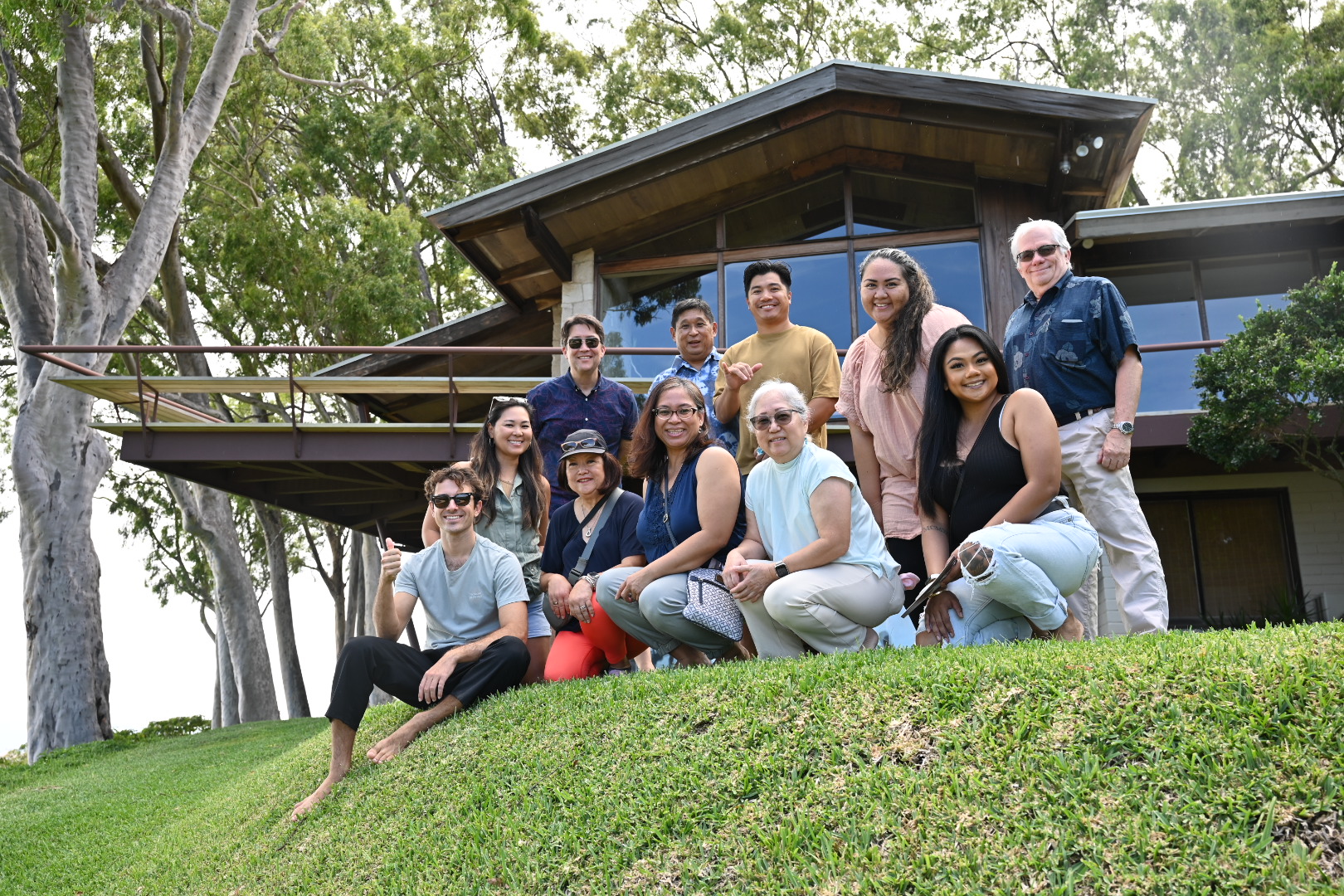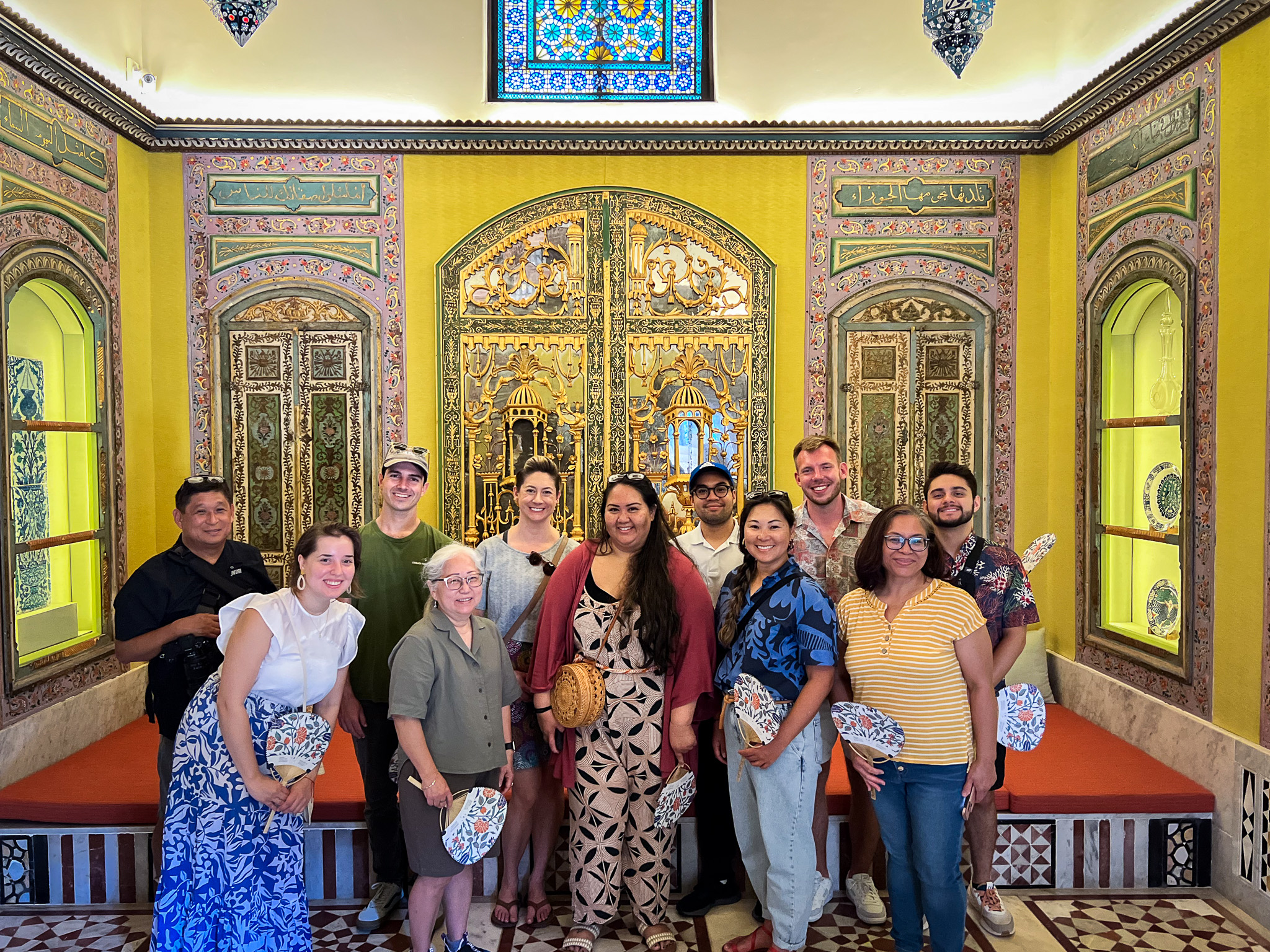Celebrating Oahu’s Architectural Diversity:
National Preservation Month
As we commemorate National Preservation Month, we turn our attention to the distinctive architectural heritage that defines Oahu. Recently, our team of INFORMers had the privilege of visiting three extraordinary architectural landmarks that embody the unique character of our island. These sites—Liljestrand House, Ossipoff Cabin, and Shangri-La—not only connect us with Oahu’s rich history but also inspire our ongoing work in designing meaningful spaces.
Liljestrand House: Mid-Century Marvel
Located atop Tantalus, the Liljestrand House stands as a shining example of mid-century modern architecture. Designed by renowned architect Vladimir Ossipoff in 1952, this residence was commissioned by Howard and Betty Liljestrand, who sought a home that harmonized with its natural surroundings. As we explored the home, we were struck by its open, airy design and the seamless integration of indoor and outdoor spaces. Sliding panels offer stunning views of Honolulu and the Pacific Ocean, while intricate details, like custom-built furniture and unique lighting fixtures, speak to Ossipoff’s innovative approach to design. We found inspiration in the house’s innovative design, which balances form and function with a keen awareness of the environment.
Ossipoff Cabin: Rustic Retreat
This hidden gem in Pupukea, designed by the same architect who created the Liljestrand House, offers a glimpse into a more rustic and minimalist style. Fortunately for a few of our team members, the cabin was the location of a special Lei Po‘o making event, so they were able to get a first-hand look at the cabin’s simple yet functional design. Its use of natural materials, such as wood and stone, along with large windows that frame the surrounding landscape, creates a sense of harmony with the environment. The Ossipoff Cabin is a reminder of the beauty in simplicity and the importance of preserving the natural aesthetics that define Hawaii’s architecture.
Built in the late 1930s by heiress Doris Duke, Shangri-La is a unique masterpiece that incorporates architectural elements from various Islamic cultures, including Morocco, Iran, Turkey, and India. As we wandered through the lush gardens and opulent interiors, we were transported to a world of intricate tilework, delicate wood carvings, and vibrant textiles. The estate serves as a testament to Doris Duke’s passion for Islamic art and her commitment to cultural preservation. Shangri-La stands as a bridge between East and West, demonstrating how different traditions can be woven together to create something truly extraordinary.
As our team visited these architectural treasures, we were reminded that thoughtful design is not just about creating functional spaces. It’s about understanding the culture, respecting the environment, and connecting with the people who will use those spaces. By engaging emotionally with these aspects, we can create designs that resonate on a deeper level.


